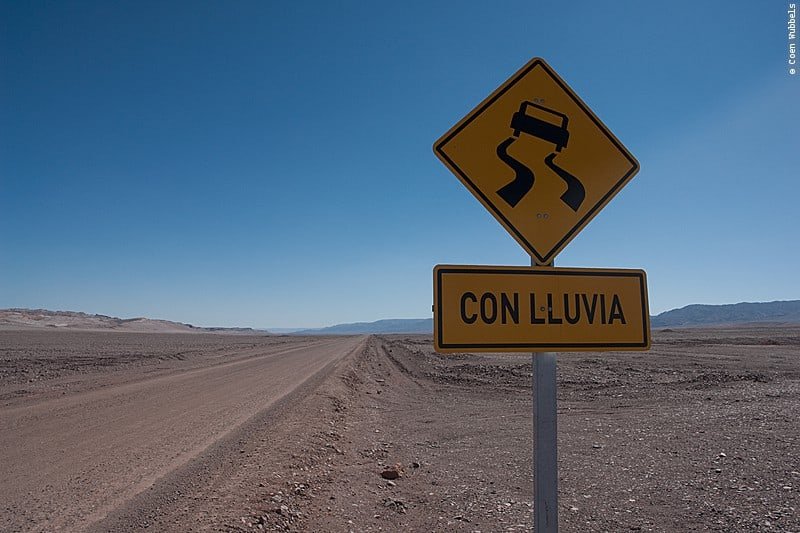Driving in Argentina can be an exciting adventure. But it’s important to understand the local traffic rules.
Argentina’s roads have their own set of rules and behaviors. Knowing these can make your journey safer and more enjoyable. Whether you’re a tourist or a new resident, getting familiar with traffic conduct is essential. This guide will help you navigate the roads confidently.
You’ll learn about speed limits, road signs, and common driving practices. Safety is a top priority, and being informed is the first step. So, let’s dive into some essential tips on traffic rules and conduct on Argentinian roads. With this knowledge, you can drive with ease and enjoy your travels.

Credit: digitalpolicyalert.org
Road Signage
Understanding road signage is crucial for safe driving in Argentina. Road signs provide essential information, ensuring smooth and safe travel. Knowing these signs helps drivers make informed decisions. This section focuses on common road signs and traffic signals you will encounter on Argentinian roads.
Common Signs
Common signs on Argentinian roads include regulatory, warning, and informational signs. Regulatory signs are crucial. They include stop signs, speed limits, and no-entry signs. These signs enforce rules and must be obeyed. Ignoring them can lead to fines or accidents.
Warning signs alert drivers to potential hazards. They include sharp turn signs, animal crossing signs, and roadwork signs. These signs are usually yellow and diamond-shaped. Pay attention to these to avoid accidents.
Informational signs provide useful information. They include distance markers, hospital signs, and fuel station signs. These signs help drivers navigate and find essential services.
Traffic Signals
Traffic signals are vital for managing road intersections. In Argentina, traffic lights follow the universal red, yellow, and green system. Red means stop. Yellow means prepare to stop. Green means go.
Some intersections have flashing traffic lights. A flashing red light means stop and proceed when safe. A flashing yellow light means proceed with caution. Always follow traffic signals to ensure safety.
Pedestrian signals are also important. They help pedestrians cross roads safely. Always respect pedestrian signals. This ensures the safety of everyone on the road.
Speed Limits
Understanding speed limits is crucial for safe driving on Argentinian roads. These limits vary by location, ensuring safety for both drivers and pedestrians. Knowing the regulations can help avoid fines and accidents.
Urban Areas
In urban areas, speed limits are lower due to high pedestrian traffic. The general speed limit in these areas is 40 km/h to 60 km/h. This range ensures that drivers have enough time to react to unexpected situations.
- Residential zones: 40 km/h
- City centers: 50 km/h
- Main roads: 60 km/h
Driving at these speeds helps protect pedestrians and cyclists. Always watch for traffic signs indicating specific speed limits.
Highways
Speed limits on highways are higher, allowing for faster travel between cities. The general speed limit here is 120 km/h. On some highways, the limit can go up to 130 km/h.
| Highway Type | Speed Limit |
|---|---|
| Standard highways | 120 km/h |
| Expressways | 130 km/h |
Higher speeds require more attention. Always maintain a safe distance from other vehicles. Watch for signs indicating changes in speed limits, especially near exits and toll booths.
Right Of Way
Understanding the right of way is essential for safe driving on Argentinian roads. Knowing who has the right to go first prevents accidents and ensures smooth traffic flow.
Intersections
Intersections can be tricky. In Argentina, vehicles approaching from the right have the right of way. Always give way to these vehicles. This rule applies even if there are no signs or traffic lights.
At roundabouts, vehicles already in the circle have the right of way. Yield to these cars before entering. This keeps the traffic moving smoothly and prevents collisions.
Pedestrian Crossings
Pedestrians have the right of way at crosswalks. Always stop for people crossing the street. It is both a legal and moral duty.
Even if there are no traffic lights, respect pedestrian crossings. Be cautious and slow down when approaching them. This ensures the safety of both drivers and pedestrians.
Driving Etiquette
Driving in Argentina can be an exciting experience. Yet, it’s important to follow certain rules and behaviors to ensure safety. Understanding the driving etiquette on Argentinian roads can help drivers navigate smoothly and avoid accidents.
Lane Discipline
Lane discipline is crucial on Argentinian roads. Always drive within your lane and avoid unnecessary lane changes. Changing lanes frequently can confuse other drivers and lead to accidents.
When you need to switch lanes, use your indicators. This signals your intentions to other drivers. Be mindful of blind spots and check your mirrors before making a move. Keeping a safe distance from the vehicle in front is also important. This allows you enough space to react if the car stops suddenly.
| Tip | Description |
|---|---|
| Stay in your lane | Keep to your designated lane to avoid confusion. |
| Use indicators | Signal your intentions well in advance. |
| Check mirrors | Look out for other vehicles before switching lanes. |
| Maintain distance | Keep a safe distance to react in time. |
Use Of Horn
The horn should be used sparingly and only for necessary alerts. In Argentina, honking is often used to signal danger or warn other drivers. Avoid honking in non-emergency situations as it can create noise pollution.
Use the horn to alert drivers or pedestrians in your path. It can also be used to signal your presence in blind spots or at intersections. Continuous honking can be seen as aggressive and should be avoided.
- Use the horn to alert others of immediate danger.
- Avoid unnecessary honking to reduce noise pollution.
- Use the horn to signal presence in blind spots.
- Do not use the horn aggressively.
Alcohol Regulations
Understanding alcohol regulations is crucial for safe driving in Argentina. Strict laws are in place to ensure road safety. Knowing these rules can help you avoid trouble and ensure a safe journey.
Legal Limits
Argentina has specific legal limits for blood alcohol concentration (BAC). These limits vary depending on the type of driver:
- General drivers: 0.5% BAC
- Commercial drivers: 0.2% BAC
- Motorcycle riders: 0.2% BAC
- New drivers (less than 2 years): 0.0% BAC
These limits aim to reduce the risk of accidents. Always check your BAC before driving.
Consequences
Driving under the influence can lead to serious consequences:
- Fines: Fines can range from ARS 3,000 to ARS 20,000.
- License Suspension: Your license could be suspended for up to 18 months.
- Vehicle Impoundment: Authorities may impound your vehicle.
- Criminal Charges: Severe cases can lead to criminal charges.
These penalties are designed to deter drunk driving. Stay sober to avoid these harsh penalties.

Credit: landcruisingadventure.com
Seat Belt Laws
Seat belt laws are crucial for safety on Argentinian roads. Wearing a seat belt reduces the risk of injury in accidents. Both drivers and passengers must follow these rules.
Front Seat
All front seat occupants must wear seat belts. This includes the driver and any passenger in the front seat. The law requires this for safety. Not wearing a seat belt can lead to fines.
Back Seat
Back seat passengers must also wear seat belts. This applies to all passengers, regardless of age. Many people overlook this rule, but it is essential for safety. It helps prevent injuries in case of an accident.
Motorcycle Rules
Motorcycles are a popular mode of transportation in Argentina. They are convenient and cost-effective. Adhering to motorcycle rules is essential for safety. Let’s explore some key motorcycle rules in Argentina.
Helmet Use
Wearing a helmet is mandatory in Argentina. It is not just a law but a crucial safety measure. Helmets protect riders from head injuries. Always ensure your helmet meets safety standards. Never ride without a helmet.
Passenger Rules
Motorcycles can carry passengers. But there are specific rules. The passenger must also wear a helmet. The motorcycle should be designed for two people. Ensure the passenger sits properly. They should hold onto the rider or the bike’s handles.

Credit: solsalute.com
Emergency Situations
Driving in Argentina requires attention to traffic rules and conduct. Emergency situations can happen anytime. Knowing how to handle them ensures safety for everyone. This section covers what to do during accidents and breakdowns.
Accident Protocol
Accidents can be stressful. Stay calm and follow these steps. First, check for injuries. Call emergency services if needed. Provide your location and details. Next, move vehicles to the side if possible. This helps clear the road and prevents more accidents.
Take pictures of the scene. These will be useful for insurance claims. Exchange information with the other driver. This includes names, addresses, and insurance details. Do not admit fault at the scene. Let the authorities decide. Finally, report the accident to the police. This is mandatory in Argentina.
Breakdown Procedures
Breakdowns can be inconvenient. Follow these steps to stay safe. First, turn on your hazard lights. This alerts other drivers. Move your vehicle to a safe spot. Away from traffic, if possible. If you cannot move the car, stay inside. Wait for help to arrive.
Set up a warning triangle. Place it 30 meters behind your vehicle. This warns approaching traffic. Call for roadside assistance. Have your location and vehicle details ready. It helps to have a list of local service numbers. Inform your insurance company about the breakdown. They may provide support or advice.
Keep an emergency kit in your car. Include items like a flashlight, first-aid kit, and basic tools. This can be very helpful during breakdowns. Stay calm and follow these guidelines. It ensures your safety and helps resolve the situation quickly.
Frequently Asked Questions
What Are The Basic Traffic Rules In Argentina?
In Argentina, always drive on the right side of the road. Seat belts are mandatory for all passengers. Speed limits vary from 40 km/h in cities to 120 km/h on highways. Use of mobile phones while driving is prohibited unless using a hands-free system.
Are There Specific Speed Limits In Argentina?
Yes, speed limits in Argentina vary by area. In urban areas, the limit is usually 40-60 km/h. On rural roads, it ranges from 80 to 110 km/h. Highways have a limit of 120 km/h. Always check local signage for specific limits.
Is It Compulsory To Wear Seat Belts?
Yes, wearing seat belts is compulsory for all passengers in Argentina. The law is strictly enforced to ensure safety. Failing to wear a seat belt can result in fines and penalties.
Can I Use My Phone While Driving?
No, using a mobile phone while driving is prohibited in Argentina. You can only use hands-free devices. Texting or holding the phone while driving can lead to fines and accidents.
Conclusion
Driving safely in Argentina requires understanding traffic rules and proper conduct. Respect speed limits. Always use seat belts. Adhere to traffic signals. Be mindful of pedestrians. Avoid distractions while driving. Courteous behavior ensures smoother journeys for everyone. Follow these tips to navigate Argentinian roads confidently.
Stay alert and drive defensively. Practice patience and remain calm. Safe driving keeps you and others protected. Happy travels on Argentina’s beautiful roads!

